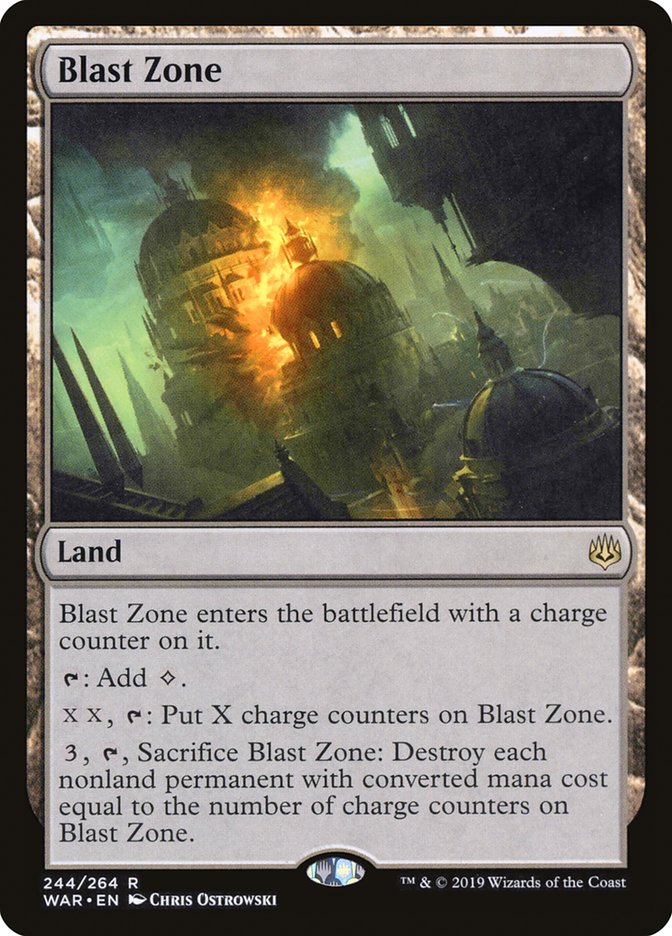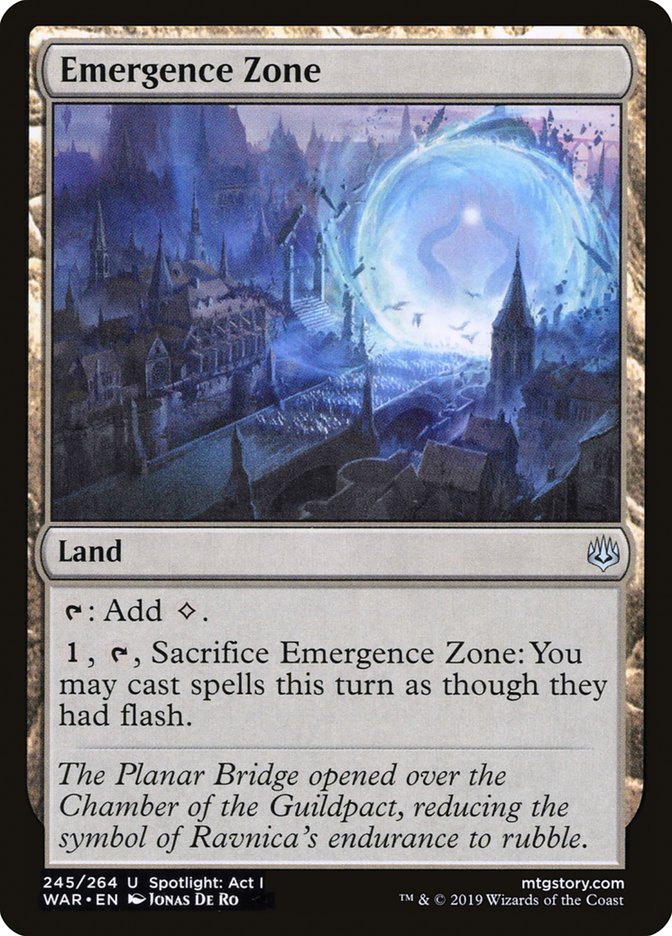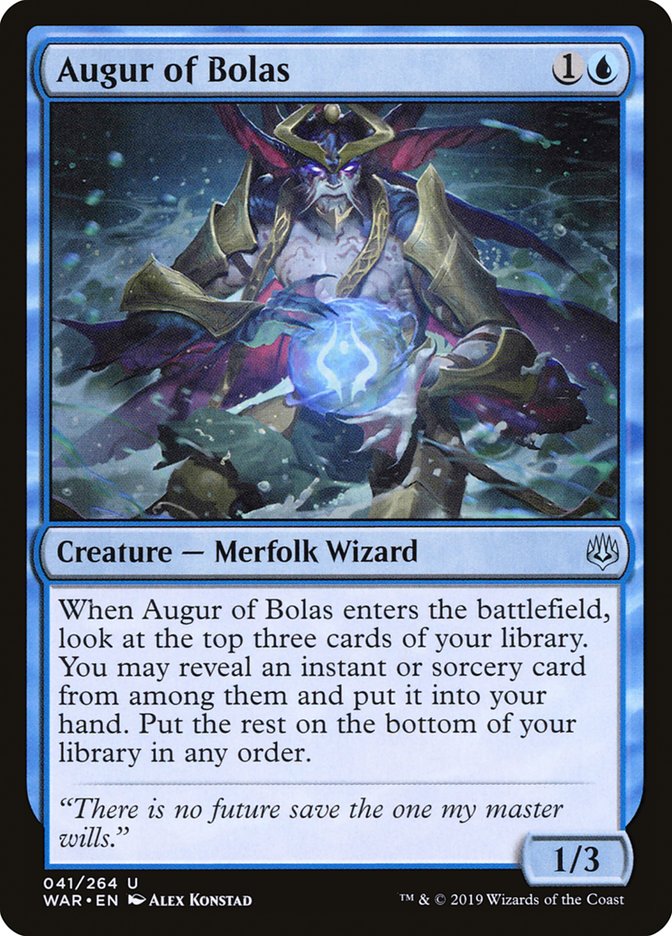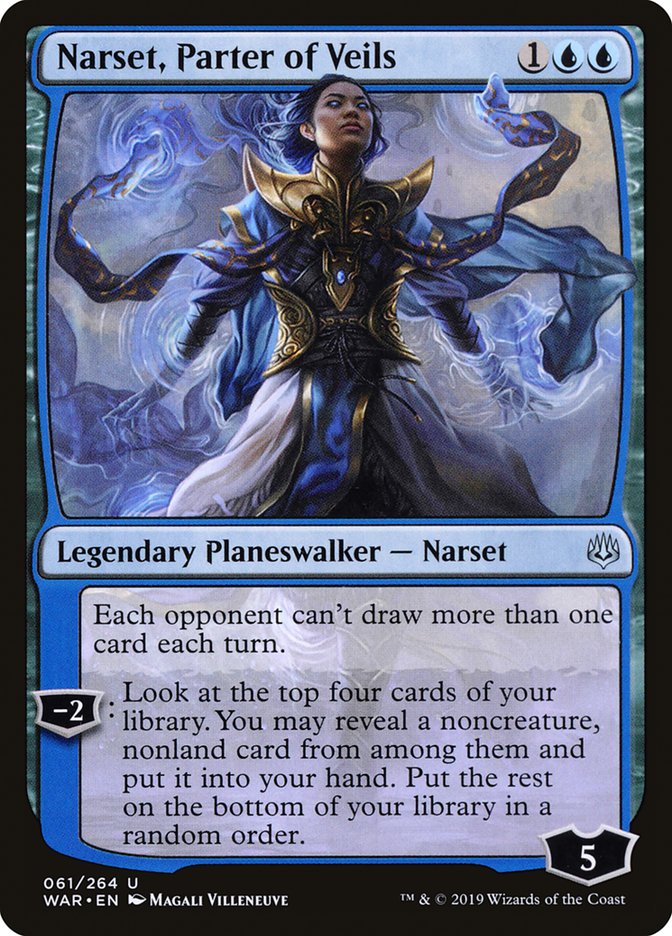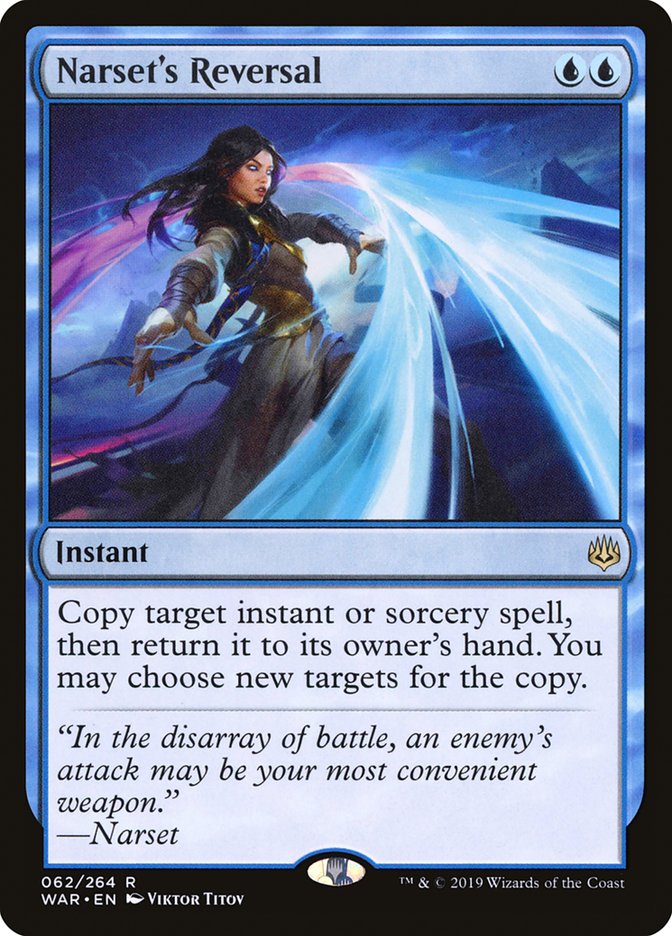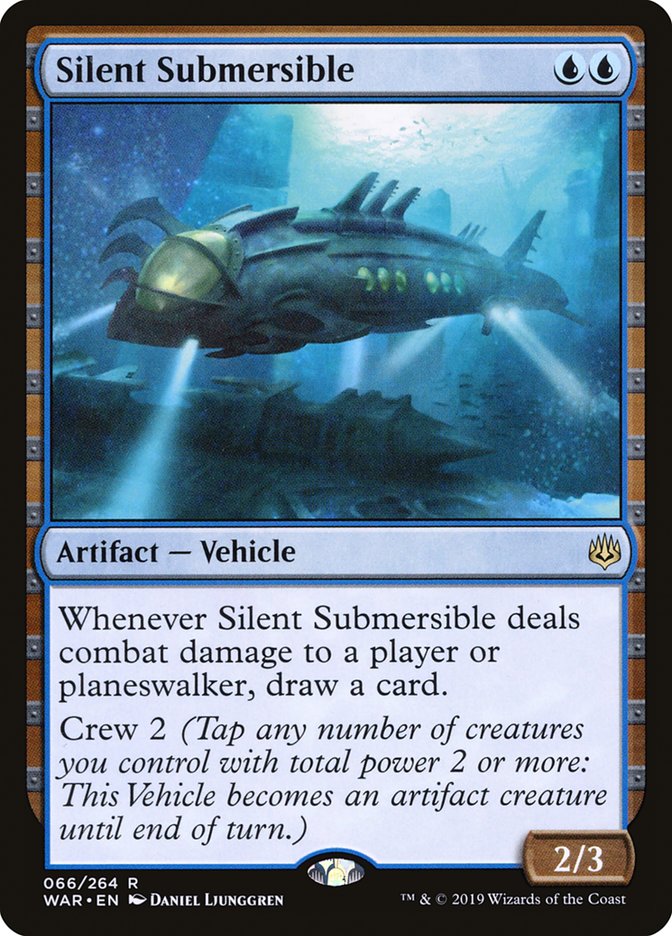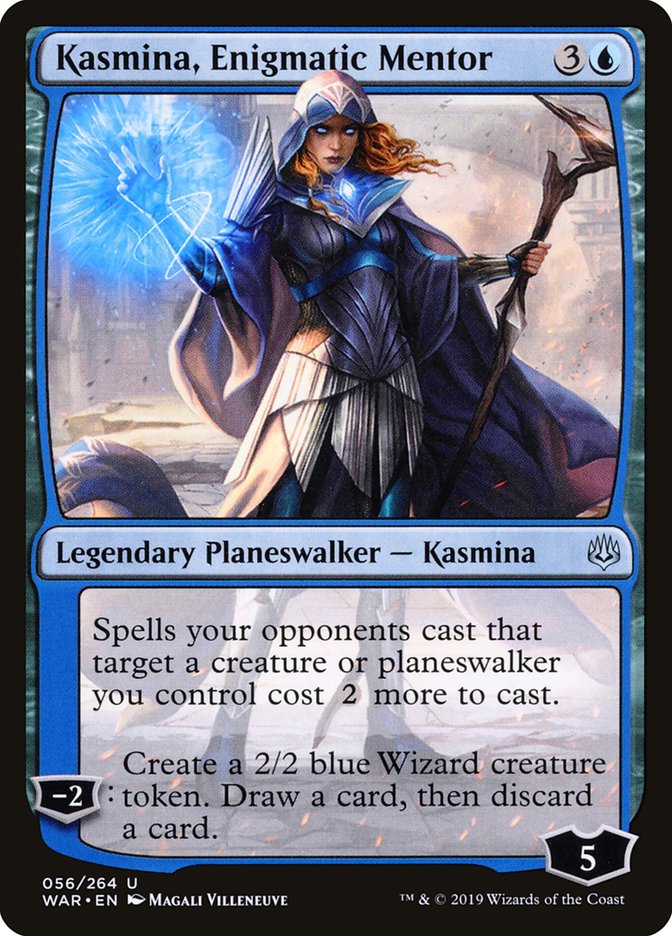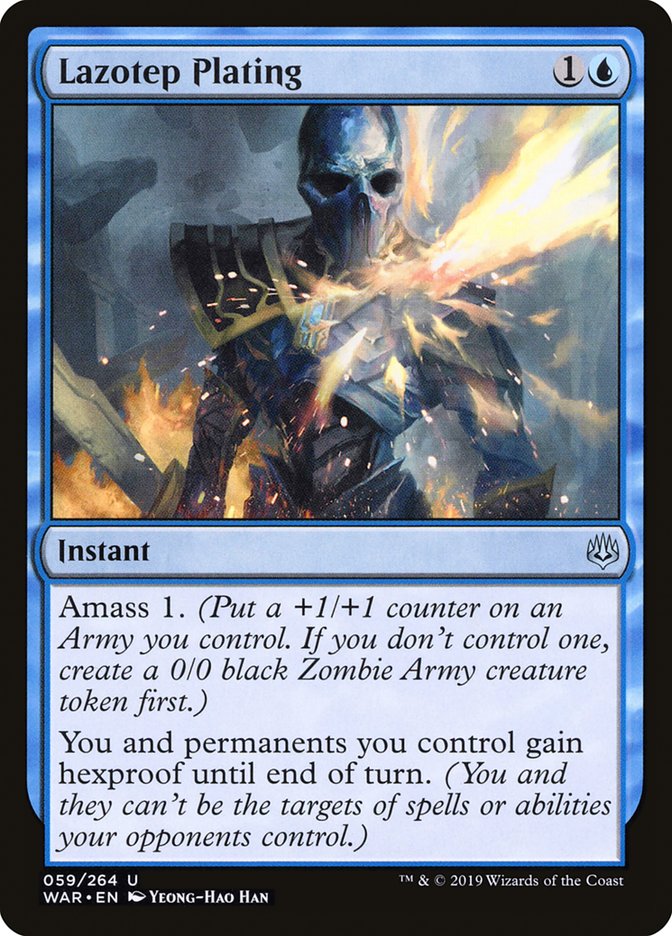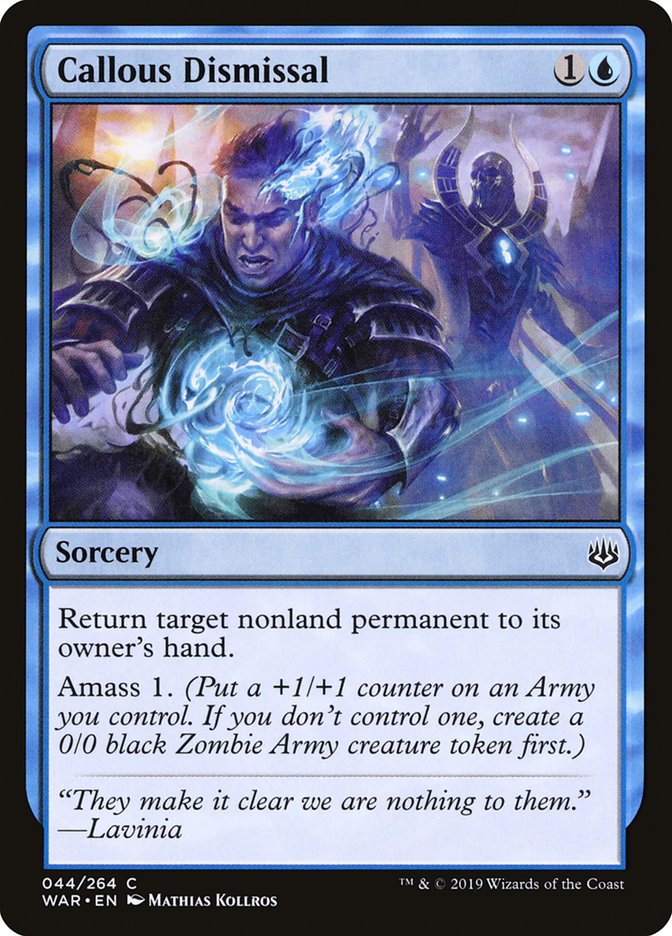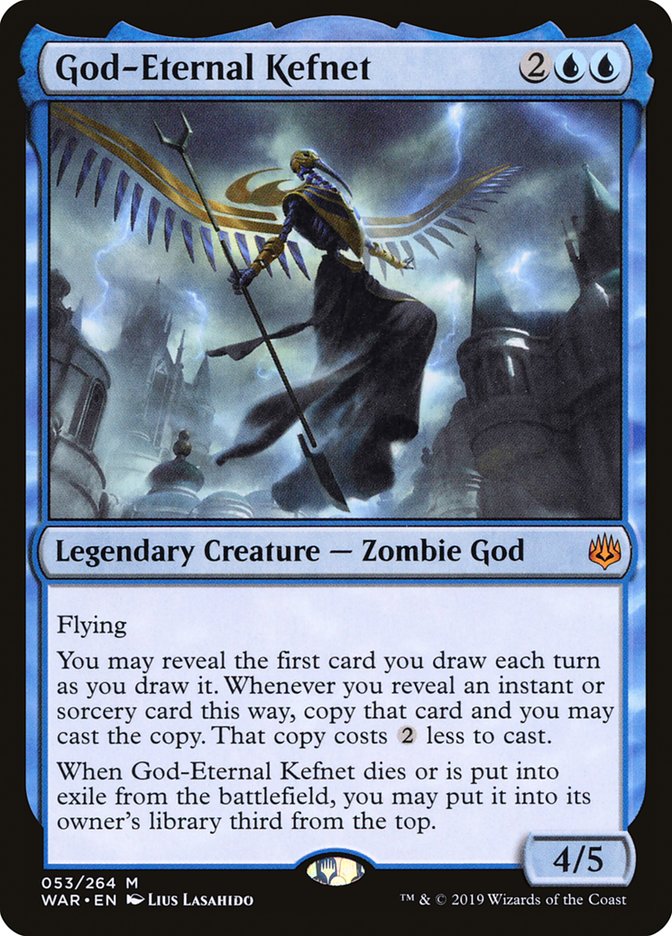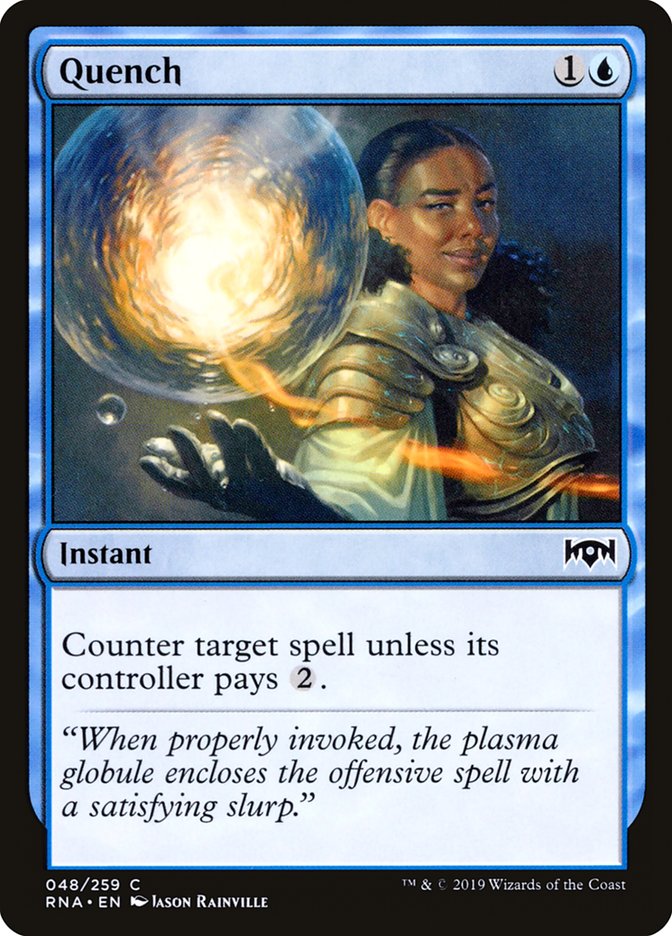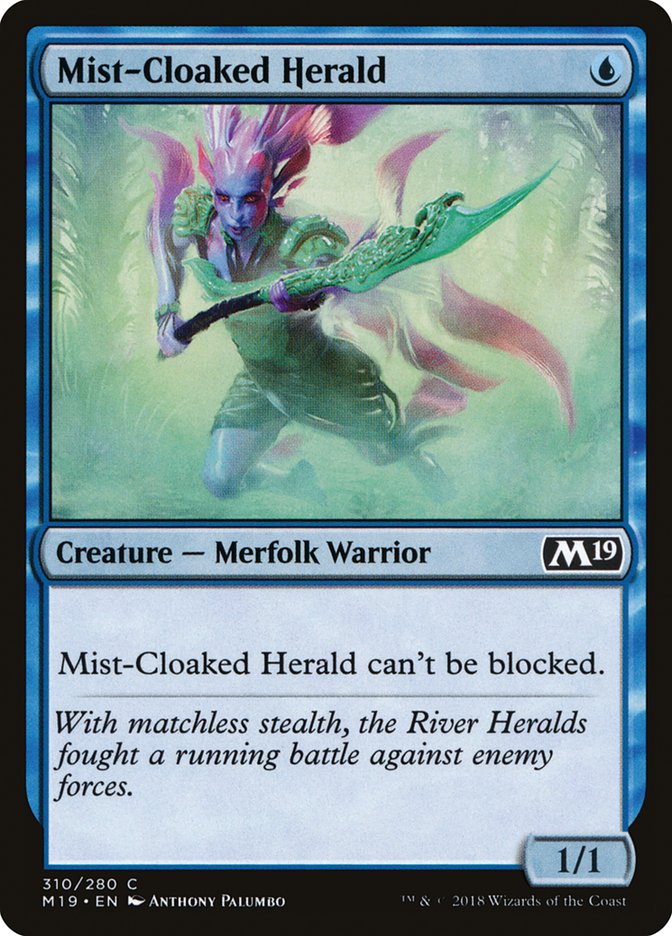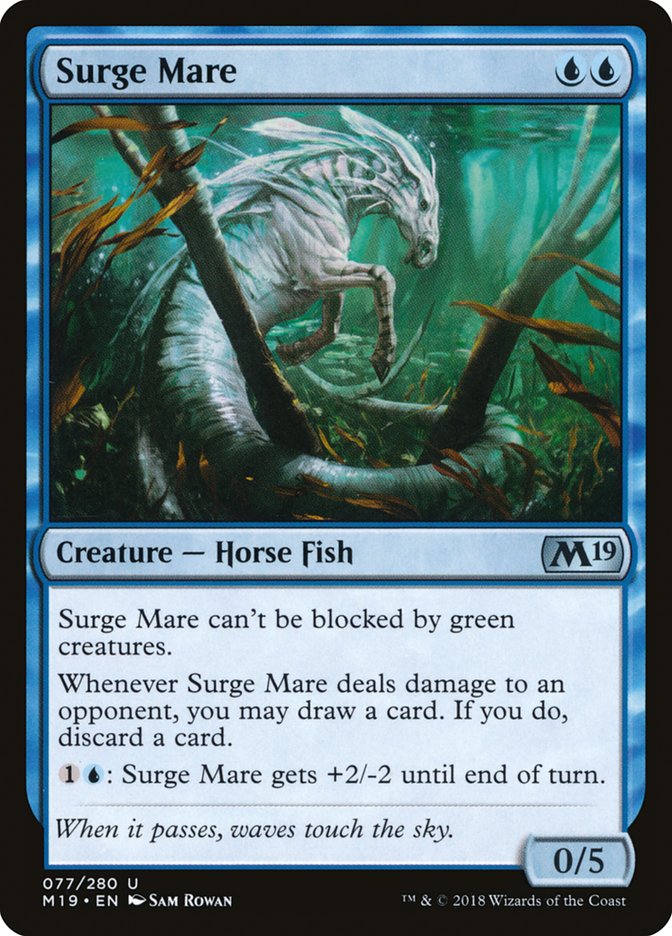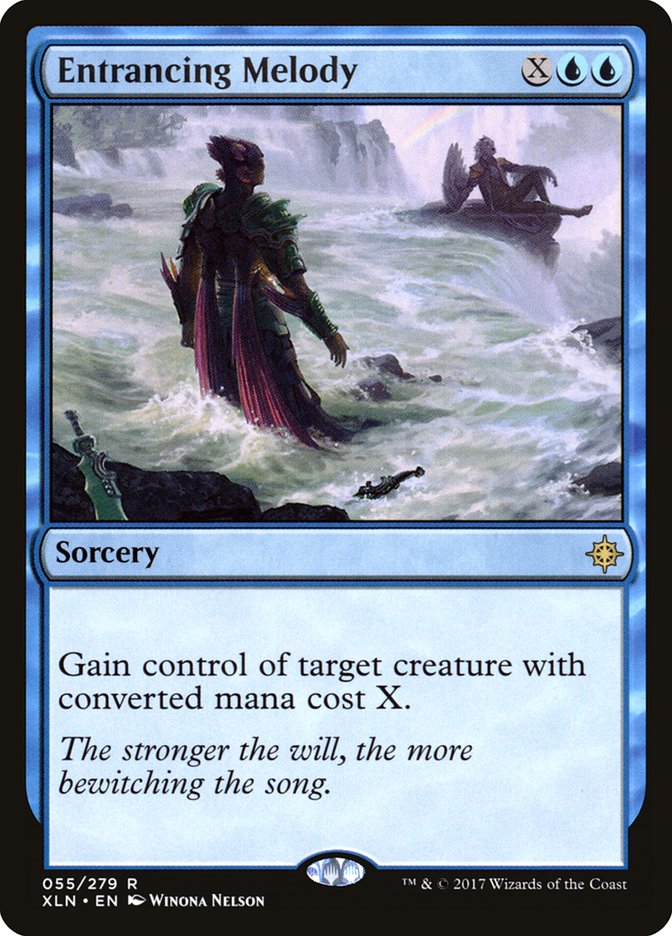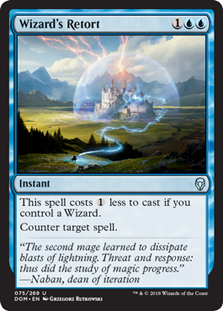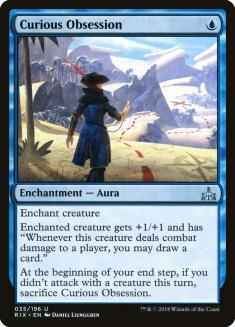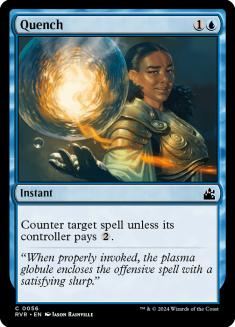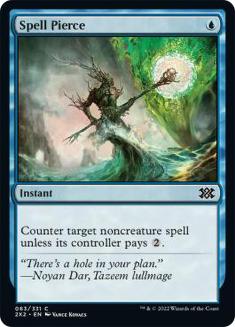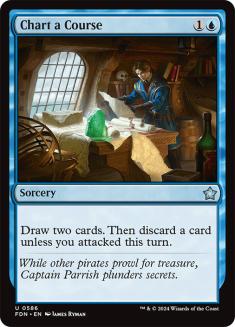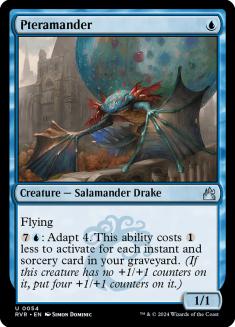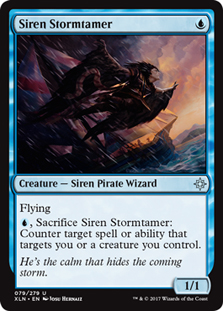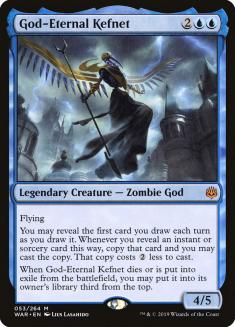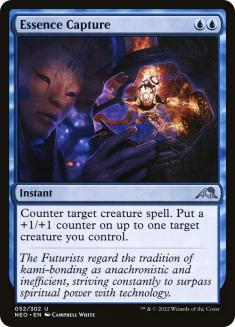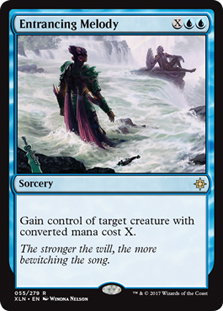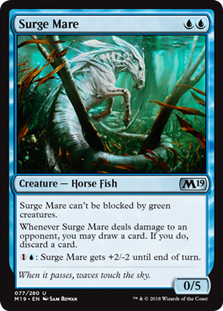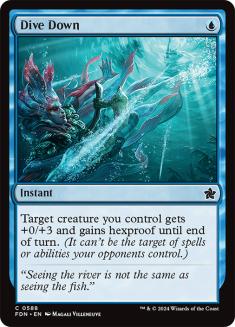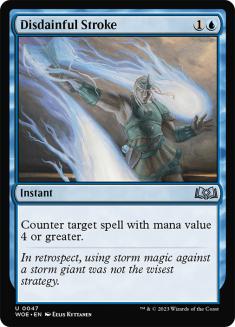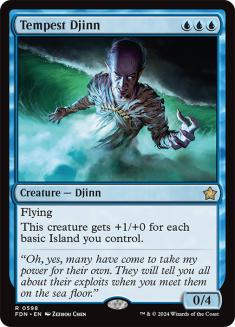A lot of people requested this article as soon as War of the Spark entered Standard, but I was hesitant to write it right away for two reasons. One is that Mono-Blue Aggro needs to be pretty finely tuned to the metagame it exists in due to a need to balance the countermagic suite against what decks you’ll actually run into, and it was going to take a couple of weeks of results to know what that metagame actually looks like for this purpose. The other reason was, frankly, I didn’t know to what extent Mono-Blue was going to be playable anymore.
In case me writing this article doesn’t make it obvious enough, I believe the death of Mono-Blue has been greatly exaggerated, though it’s easy to see why people did think the archetype would disappear. Both Blast Zone and Teferi, Time Raveler presented themselves as huge threats to the deck. Blast Zone is undeniably a huge problem as a way to blow up one-drops and Curious Obsessions whilst ignoring all manner of countermagic and protection spells (short of Repudiate, which is far too narrow a card for me to actually advocate playing). The thing is that almost no one is actually playing Blast Zone. It was seeing a lot of play in Simic Nexus, but that deck has almost disappeared due to how hostile the planeswalker static abilities are towards it, and even when that deck was seeing play, you were still so favoured against everything else the deck does that the matchup was still decent, provided you both constructed your deck and sideboarded with Blast Zone in mind.
Teferi, Time Raveler is seeing quite a lot of play, though, and surely that card destroys Mono-Blue, right? Forcing the counterspell deck to play at sorcery speed is clearly problematic, and the static ability even makes Dive Down close to blank cardboard. The reality is that there are a lot of three-mana spells in Standard that look like they should be largely unbeatable for Mono-Blue: Thief of Sanity; Benalish Marshal; Goblin Chainwhirler; Kaya, Orzhov Usurper. Losing to resolved three-mana spells is nothing new, and at least Teferi is polite enough to be Spell Pierce-able.
Just like all those cards, too, there are plenty of tricks you can learn to contain opposing Teferi, Time Ravelers. Try to maintain enough of a battlefield presence such that your opponent can’t comfortably -3 their newly cast planeswalker; prioritise keeping Siren Stormtamer alive more than you would previously, since they’re the one way you can still interact at instant speed through Teferi’s static ability; and remember that a held Curious Obsession can set up the surprise extra point of damage you need to carry out an assassination attempt on a resolved Teferi. Having to swarm the battlefield more against the Kaya’s Wrath decks is scary, but in practice I’ve found that I beat resolved Teferi, Time Ravelers about as often as I lose to them, even if many of those games look like they should be hopeless.
Mono-Blue is far from dead. The games are even tougher to play and more involved than they used to be, but the deck still has a lot of fight to it and feels like a very reasonable deck choice to me (especially considering Kraul Harpooner is seeing the least play it has seen in a long time). This is the definitive guide for War of the Spark’s impact on the deck – the cards you should be playing, how you should be building the deck, and how to be prepared for the new decks that prowl around this metagame.
Mono-Blue and War of the Spark
I have been asked about the playability of every single card I’m about to run through and felt like I should just put all my thoughts on these cards in one place. In rough order from least playable to most:
I’ve actually seen someone playing these cards. Even ignoring how inefficient these cards are in a deck that lives and dies by the efficiency it can muster, do not put non-Islands in your manabase. This is the Tempest Djinn deck, and on top of that, the mana costs in Mono-Blue are intensely harsh to the extent that a colourless land is close to not being a land at all.
With my current maindeck, you’re 73% to find an instant or sorcery off your Augur of Bolas triggers. This is unacceptable, and even worse when you consider that in the matches where you’d be sideboarding in Augur of Bolas, you’re also often trimming on countermagic for more creatures. The upside on a two-mana sorcery-speed spell just generally needs to be pretty high to put it in Mono-Blue due to the downside of not being able to hold open countermagic as easily, and the upside simply isn’t there for Augur of Bolas.
Narset, Parter of Veils’s hit-rate is quite a bit better, finding a noncreature spell for you 89% of the time with my current maindeck. This is not quite as high as I’d like but is in the range of being acceptable. The problem is that Narset fights on none of the axes that I’m really interested in. Whilst there certainly are times where I’m interested in fighting my opponent’s card advantage, typically I’m much more interested in stopping them from affecting the battlefield, investing large amounts of mana in my own card advantage is similarly much less appealing than affecting the battlefield myself, and tapping out for three-mana sorcery-speed spells is just generally terrifying in the matchups where either side of Narset’s abilities would be appealing.
This card is very narrow. It lines up poorly enough against removal spells that you can only really bring it in against Nexus of Fate decks where you have both Nexus of Fate and Chemister’s Insight as decent targets. If Nexus of Fate decks become dramatically more popular, then we can talk, but until then…
If this only required one power worth of creatures to crew, it would be an awesome sideboard card against control decks. If it had any sort of evasion, there would be at least some applications for it. Sadly, neither is true.
The static ability and looting ability are at their most appealing against Mono-Red Aggro, where the 2/2s don’t deal with the cards that actually kill you in Runaway Steam-Kin and Goblin Chainwhirler, and control decks, where you can never tap out for a four-mana spell.
A split card that can counter a removal spell or a discard spell is honestly very sweet, and a nice variant on Dive Down. As always, efficiency is king, and I don’t think Lazotep Plating is quite there as a result, but it’s very close to good enough.
This is an upgrade to Exclusion Mage. Costing one less mana and being able to target a wider variety of permanents are both relevant, and being a spell for Pteramander is much more important than being a Wizard for Wizard’s Retort. Exclusion Mage was a card most people played some number of in the sideboard back in Ravnica Allegiance Standard, but that I deemed mostly just worse than running more copies of Entrancing Melody. That said, Callous Dismissal is enough of an improvement to at least be in the conversation, and even though I don’t quite think the card is good enough at present, I do plan to experiment with the card more moving forward.
This card is not quite strictly better than Deep Freeze in that it plays quite poorly against +1/+1 counters, but the cheaper mana cost and the fact that Merfolk Trickster can happily attack into 1/1s but gets brick-walled by 0/4s means that it’s mostly going to be the better sideboard inclusion. I don’t currently want access to this kind of effect, as it’s mostly a necessary evil you only pack in your sideboard for when you expect a lot of Niv-Mizzet, Paruns and Rekindling Phoenixes, which are currently both at an all-time low since they line up poorly against Teferi, Time Raveler, but it’s an important tool to keep in mind should either of those cards see a big resurgence.
I was not expecting to be such a big fan of God-Eternal Kefnet, and originally added it to my sideboard half-jokingly, but I’m 100% a convert. God-Eternal Kefnet is very specifically excellent against Lava Coil decks. Yes, the notion that we’re playing Kefnet as simply a four-mana 4/5 flying creature sounds a little bit absurd, but the body is just a huge nuisance for Mono-Red and Gruul to deal with and then threatens to end the game quickly once you’ve stabilized. If you pay close attention to your opponent’s removal suite, there are also some midrange decks that Kefnet can line up quite well against, especially if they make their deck too low to the ground against you in the sideboard games.
Note that in addition to having a little bit of resistance to Hostage Taker, Kefnet dies to none of the following; Tyrant’s Scorn, Cast Down, Enter the God-Eternals, Moment of Craving, Oath of Kaya, Cry of the Carnarium, Ritual of Soot.
All of that brings us to my current list:
Spells (24)
- 4 Opt
- 2 Negate
- 3 Spell Pierce
- 1 Chart a Course
- 4 Dive Down
- 4 Curious Obsession
- 4 Wizard's Retort
- 1 Quench
- 1 Essence Capture
Sideboard

The most notable thing is I’ve heavily skewed my countermagic suite towards dealing with planeswalkers. Blast Zone and Teferi, Time Raveler both make me want to bias my deck towards making sure I have as good a Game 1 as I can justify against the decks playing those cards. As a result, I have the second Negate in the maindeck and am electing to play a Quench instead of additional Essence Captures, essentially acting as a bad Essence Scatter that’s still a live spell against creatureless decks like Jeskai or Esper Superfriends.
I don’t want to touch the card Mist-Cloaked Herald as long as Blast Zone is in the format in order to limit the damage that card can cause, and the Kraul Harpooners that you play Mist-Cloaked Herald in order to beat are at an all-time low right now anyway. I’ve finally given in and moved the twentieth Island to the maindeck, mostly because there’s not really a 41st spell I’m actually excited to be playing there at present.
The full four Surge Mare in addition to two Kefnet in the sideboard are a heavy nod to the popularity of Mono-Red Aggro and the need to shore up that matchup, whilst the fourth Spell Pierce recognises the popularity of the Superfriends decks (sadly we’re not allowed to play five Negates, and being able to counter Teferi, Time Raveler when you’re on the draw is very important).
Entrancing Melody is noticeably worse than it used to be, with the mirror match being almost nonexistent and with Azorius Aggro having adopted Teferi, Time Raveler, whose Repulse effect is very effective against this card. Still, Entrancing Melody is such a powerful and unique effect in this deck that the first three copies of the card feel important regardless.
Sideboarding
VS Mono-Red Aggro
Out:
In:
This has now become the first matchup where I sideboard out Curious Obsessions due to how hard it is to get one going in the early turns of the game, and I’ve actually been pretty happy with this approach. Entrancing Melody is slow and clunky in the matchup, but Runaway Steam-Kin and Goblin Chainwhirler can be annoying enough that you want access to a small number of the effect.
VS Azorius Aggro
Out:
In:
I never really liked countermagic against this deck in the first place, and the presence of Teferi, Time Raveler makes this even more the case, though Spell Pierce is efficient enough and good enough at delaying Teferis that I think you still want it in regardless. Law-Rune Enforcer and Teferi both make Kefnet reasonably unexciting, but it’s excellent in the games where you can contain both those cards.
VS Esper Midrange
Out:
In:
The exact sideboarding you want in this matchup is going to depend a lot on the details of your opponent’s list, but this is a good baseline to work from. If you expect that your opponent doesn’t have many Mortifies and is sideboarding out their Vraska’s Contempts, God-Eternal Kefnet becomes more appealing, Merfolk Trickster is unexciting in the face of Basilica Bell-Haunt, and if your opponent is keeping in cards like Teferi, Hero of Dominaria, you can move in more heavily on Spell Pierce or Negate effects.
VS Esper Control
Out:
In:
If you expect your opponent has both Thief of Sanity and Hostage Taker after sideboard, you can bring in the third Essence Capture, whilst you want zero of this effect if you’re confident they will have neither of these cards in their deck.
VS Esper Superfriends
Out:
In:
VS Jeskai Superfriends
Out:
In:
This deck has a lot more cards to sideboard in against you than to sideboard out, which makes it hard to know exactly how their deck is going to look after sideboard. In particular, be willing to alter numbers of Essence Capture and Disdainful Stroke based on what cards you see in Game 2.
VS Four-Color Dreadhorde
Out:
In:
This matchup is quite a bit tougher than the other Superfriends decks, since needing to be able to interact with both Wildgrowth Walker and planeswalkers makes it much more likely you have the wrong type of interaction for whatever is happening. As is often the case, be willing to alter your sideboarding based on what you see in Game 2, as a card like Disdainful Stroke can look either great or awful depending on the specifics of how your opponent is sideboarding against you.
In the world in which Disdainful Stroke is bad, God-Eternal Kefnet starts to look quite good. It’s really easy for your opponent to go way over the top of this card if they want to, but if they’re lowering their curve to interact better against your deck, Kefnet dodges almost every piece of removal in their deck outside of Teferi bouncing him.
VS Bant Midrange
Out:
In:
This matchup is incredibly awkward. The ramp spells make Spell Pierce’s lifespan short, and yet Teferi, Time Raveler and Vivien, Champion of the Wilds are two of the scariest cards in their deck. Entrancing Melody would normally be excellent against a deck like this but risks looking embarrassing in the face of Teferi. Meanwhile, a lot of their creatures don’t matter, but the ones that do can be game-ending. As a result, I’ve not really found a sideboard plan I love in the matchup, as no matter what you do you’re at risk of things misaligning, but moving away from Dive Down and towards more actual countermagic is important.
VS Simic Nexus
Out:
In:
I used to sideboard out all my Tempest Djinns in this matchup before War of the Spark entered the equation, but now you need some number of that card to fight through Blast Zone. Meanwhile, Essence Capture is a lot less important than it used to be, depending of course on exactly what creatures you see from your opponent in sideboard games.
Whilst I believe that Mono-Blue Aggro is very clearly worse than it used to be, I still believe it to be a viable and competitive deck choice. Ultimately, you can only go so wrong registering Spell Pierce and Merfolk Trickster in the planeswalker format, and whilst I can’t say that it’s the deck I plan to register for my upcoming tournaments – Standard is very wide at the moment with a lot of appealing options – I can absolutely say I believe the deck to very much be viable and that I plan to put a lot of time and effort into working on it.


